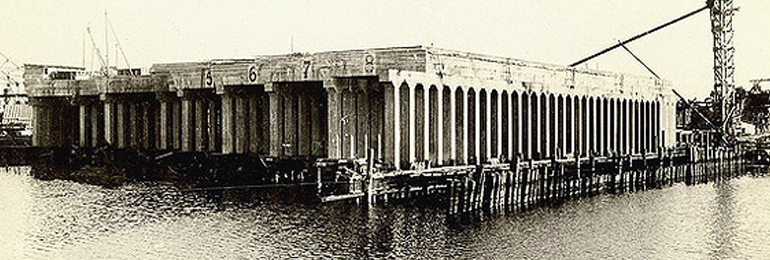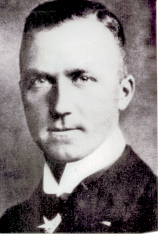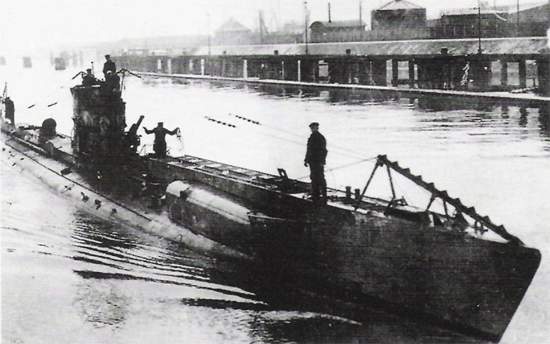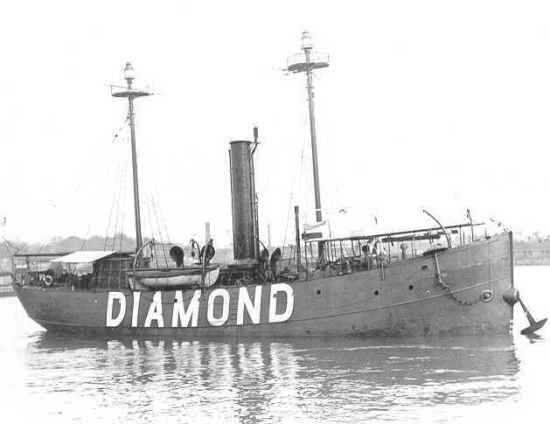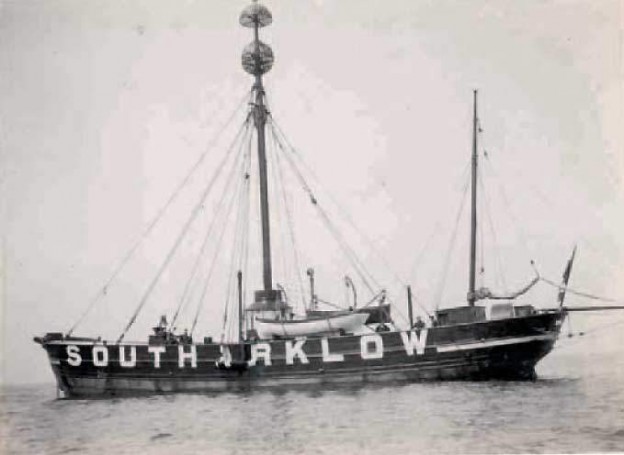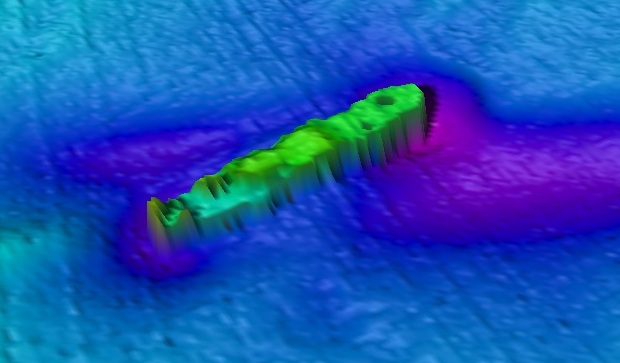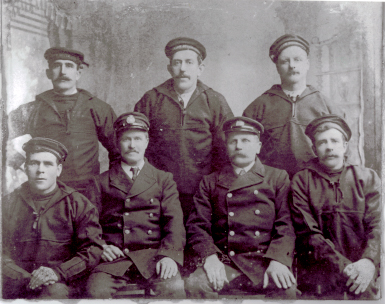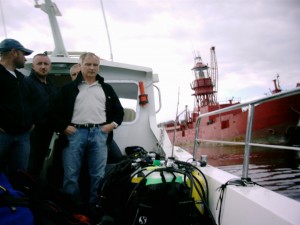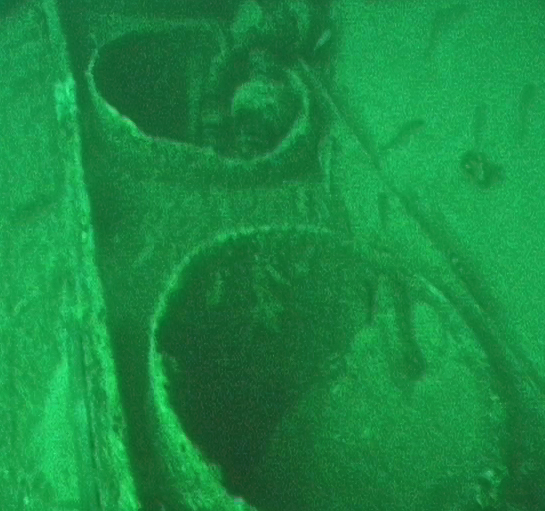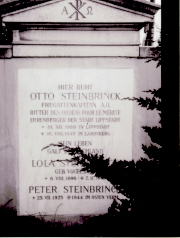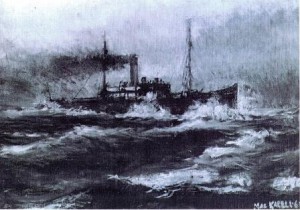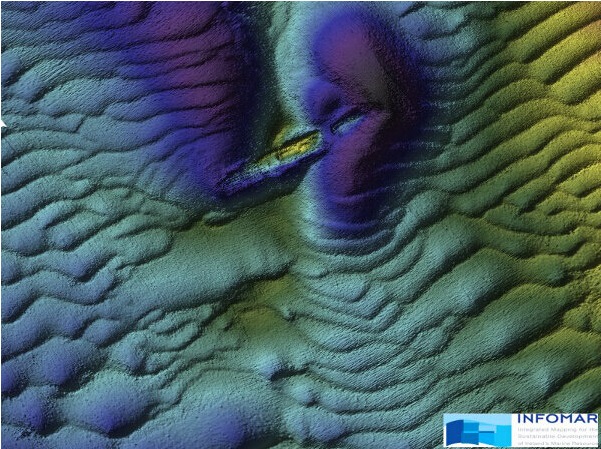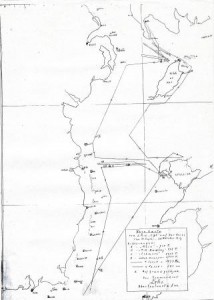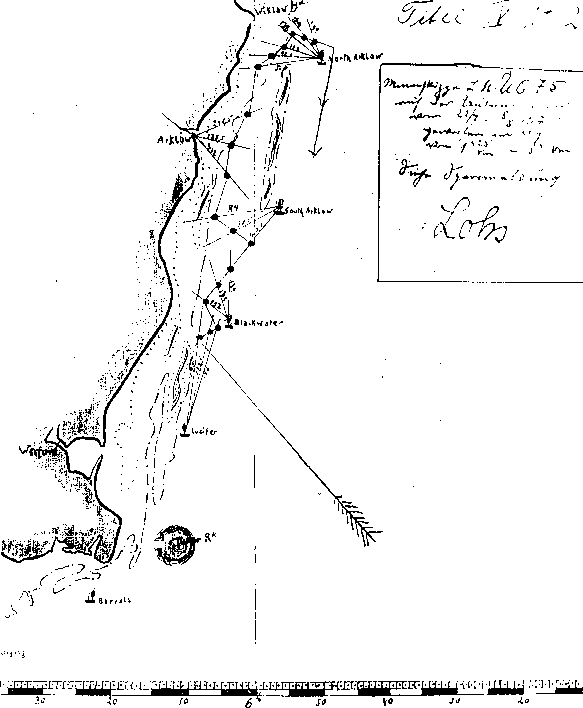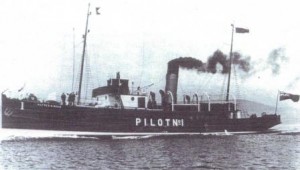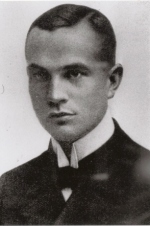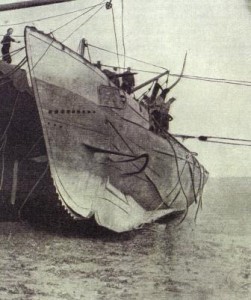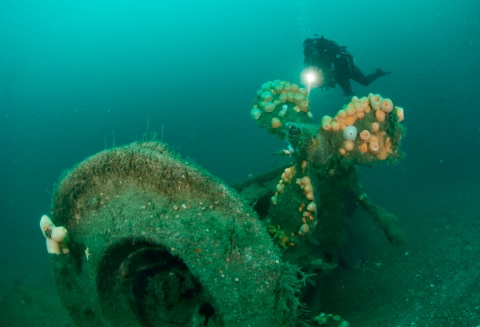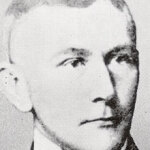The repeated claims that America declared against Germany during WW1 because her citizens and ships had been attacked by German U-boats is not accurate. Though the U-boats were restrained as a result of American diplomatic protests, America did not enter the war at that time, and when they did, it was for different reasons. This has not been the first nor the last time that war was pursued for reasons that were not accurately recorded. This type of media management has of course reached heights of a totally new sophistication today.
American citizens died crossing the Atlantic when their ships were attacked by U-boats, before and after the Lusitania incident in 1915. Despite this, America did not enter the war until a full two years later. The reasons were; America felt that it was still early in the conflict and Britain might be victorious. And besides, orders for all kinds of war material were doing very well thank you. Public and political opinion in America had not reached a point favoring the sending of troops to die in Europe. Lastly and more pragmatically; its state of preparedness – America was just not ready to fight a gigantic war in Europe, either militarily, industrial or morally. Lastly and probably not least, the ground rules had to be agreed. Who would get and pay for what?
By 1917 the position had changed dramatically. The war was dragging on, and it had become apparent that Germany could achieve a victory over France, or a more otherwise favorable armistice. Germany had made impressive technological advances with submarines, and their advanced program of mass production threatened to overwhelm the Allies. An invasion of Britain by Germany might not have been possible or even desirable then, but the embargo of Germany and the restriction of its mercantile and still intact naval fleet’s access to the Atlantic and world commerce, would have ended. The result might have been, a European power administrated from Germany. One is tempted to observe and speculate – a bit like where Europe is heading, a second attempt 100 years later by another route?
A Year of Living Dangerously.
The battle that took place around the British Isles, between the Allies and Germany’s U-boats, from January 1917 until the spring of 1918, decided the outcome of WW1. Britain was already having serious difficulties with supplies and war material, and it was Germany’s intention to choke off all shipping to Britain before America could deploy its enormous resources. At the same time, they also planned to over-run the Allies in France.
America began to roll out her war machine and at a stroke, any hopes of an unfettered access to the Atlantic by Germany was threatened, and proved irreversible. The land war across Europe remained in the balance, until the spring of 1918. The German Fleet was still bottled up, and the success rates enjoyed by their submarines began to diminish after May 1917.
Further research now shows that, despite Germany’s failing fortunes in 1917, this was not the situation enjoyed by those travelling the seas between Ireland and England. Known by many as the Irish Sea, or the Irish Channel, the term is sometimes meant to include all of the water between Ireland and England, that is, the North Channel, the Irish Sea, and the George’s Channel. However, because of the utter havoc and destruction that was perpetrated in these waters by German submarines during WWI, it can deservedly be known as ‘U Boat Alley’(Note 1).
Following Germany’s announcement of its second ‘unrestricted U-boat campaign’, the wrath of its undersea boats was unleashed. The full range of the Germany’s submarines attacked enemy ships in the ‘Alley’: The larger ocean going U class, the coastal class UB, and the minelayer UC type, all had by then, improved armaments and excellent radio communication capabilities.
Although the smaller boats were rated ‘coastal’, they undertook ‘cruises’ that were remarkable. They routinely circumnavigated the British Isles in all kinds of weathers, with some cruises, sometimes lasting 3-4 weeks. A more accurate description of these cruises would be, ‘attack missions’.
The range and capabilities of these ‘ocean pests’, both surprised and disturbed the most senior British naval commanders. The successes of the different submarines that were operating in the ‘Alley’ at this time, varied. Some took every opportunity to attack all kinds of enemy vessels, and others achieving little success, seemingly reflecting their experience or capability.
‘Submarine’ and ‘U-boat’ are words that conjure up impressions of daring, adventure, danger, heroism even glamour, and all that stuff, but submarines were dangerous craft to go beneath the ocean in. Iron tubes, which housed as little as twenty, and as many as 80 submariners, in cramped conditions, and in some terrible seas. Their crews suffered terrible strain, and some of the more successful commanders were invalided out of active duty. An effect of the U-boat war that was not peculiar to German submariners, but Allied naval personnel also. And in particular, those serving on ‘Q’ or ‘Mystery’ ships.
Of particular relevance to the Alley, were the UC boats – submarines that laid mines. These submarines carried torpedoes, both inside and outside of the submarine(Note 2), 18 mines in 6 ‘chutes’ and a deck gun. When the loaded torpedoes had been fired, spare torpedoes that were stored inside the boat, and externally behind the outer tubes, were then reloaded. This type of rearmament could only be accomplished when the submarine was on the surface, where the mines in the top of the chutes could also be accessed, and reset for any required change in operations.
Such rearming was sometimes carried out in remote bays at night, which may have helped to give rise to the constant accusation that citizens in remote places of Ireland, were aiding the German submariners.
The mines were laid across known shipping routes, in very particular places, at very particular times. There were a number of UC boats and other types, operating in the Alley during this period, but only a few of these presented a threat so great, that the Allies felt compelled to take extraordinary measures, in order to put a stop to them.
Westwards!
(‘Log of a U-boat Commander’. 1939. Ernst Hashagen – U 62)
Amongst the first of the modern minelayers into the Alley from the elaborate submarine base at Bruges, Flanders, was UC65, commanded by Otto Steinbrinck. Born in 1888, Steinbrinck entered the naval service in 1907. He specialised in torpedoes and like other notable aces – artillery. His first submarine command was U6, followed by UB10, UC65 and UB57. He was withdrawn from active duties in January 1918 due to exhaustion. He served in German industry during WW2 and was sentenced to 5 years imprisonment by the Allies for honorary membership of the SS. He died through ill health and a sickness requiring an operation in 1949, just before the expiration of his sentence.
UC65 began sinking ships in the Alley on 8th February and retreated from there at the end of May. He had left in his wake a total of 58 ships hit(Note 2). Two of these are worthy of further mention.
On the 1st of March, Steinbrinck sank the ship Drina off Skokham Island, SW Wales. The ship was one of the largest sunk in the Alley and it was controversial. Approximately 400 were saved from the attack on what was first claimed to have been a hospital ship. The Drina had been a hospital ship but was apparently not so deployed, when she was attacked and sunk. She lies in 200 feet, and the work of clarifying the controversy; which submarine sunk her, and exactly how she was deployed, has been the work of the diver and author of this terrific web site;
The next attack of note occurred off Arklow on the 28th of March.
There were two classes of vessel unique in their activity during WWI. Fishing boats and their crews continued to go about their near normal fishing activities, despite the presence of enemy submarines. They were totally unprotected on the sea, and they paid a heavy price in terms of fishing vessels being sunk by enemy submarines, but rarely lost their lives. Another, lightships, were permanently afloat, and were also totally unprotected. Moored to the seabed without any capability of propulsion, these vessels and their crews were permanently stationed miles from the coast in order to provide a light for the guidance and protection of mariners.
It was understood that these vessels were ‘neutral’, and did not perform any war duty, except to provide light for any ship on the sea. German submariners generally kept to this understanding, probably due to the fact the lightships were of as much benefit to them, as they were to their enemy. They provided navigational aid, and crucially, they were a guide for submarine commanders when they were laying mines.
However, the British authorities contravened this understanding,(Note 3) by fitting lightships with radios and hydrophones, in order that they could relay the positions of submarines. The practice inevitably placed the lightships and their crews in extreme danger.
It’s ironic that, it was Britain’s enemy, King Louis XIV, who probably gave birth to the light-keepers’ lifetime motto, ‘For the Safety of All’, in 1697. The great entrepreneurial lighthouse builder, Henry Winstanley, was kidnapped by French privateers during construction of the Eddystone lighthouse. When the French King learned of his capture, he ordered his release, and is accredited with the message, ‘I am at war with England not with the World’.
The practise of ‘submarine watch’ inevitably placed the lightships and their crews in extreme danger. There appears to be no evidence that the lightship crews refused to cooperate. There is also a small number of recorded incidences were lightship crews rescued German submariners.
There are only two cases(Note 5) were a German submarine detected a lightship attempting to either warn a ship in danger or to relay a submarine’s position, and then deliberately attacked and sunk it.
The second occasion occurred off the coast of America, in August 1918, when the Diamond Shoals, LV 71, was sunk after it used its radio to warn ships that there was a submarine in the area. U140 promptly boarded her, put off the crew in a boat, and sunk the lightship.
The first deliberate and almost unique attack on a lightship, occurred when UC65 sunk the Guillemot, South Arklow lightship, off the coast of Wexford, in almost identical circumstances, on the 28th March 1917. Otto Steinbrick’s attack mission began on 24th March, and he left the Alley during the first week in May. He sank 38 ships. On the 28th, he sank 10 ships, including the Guilemot. One could easily understand why his enemy should believe that, such a man had to be stopped.
Steinbrinck and his crew boarded the Guillemot at “6.10 PM on the 28th , and found no secret material on board”. He put off the crew in its longboat, and placed charges in the hull. But the stoutly built lightship failed to sink. She finally sank after the submarine fired on it with its deck gun.
The only reporting of the Guillemot incident, was a notice posted in the Custom House in Dublin city on 31st March, strangely announcing, that the;
‘The South Arklow Light Vessel has disappeared’
Divers from the Dublin based sub aqua club, Marlin, located and dived on this wreck many years ago, and reported that the hull of the ship was still intact and sitting upright on the seabed. Evidence of shell damage to the hull was visible.
While it was reported that the crew of the submarine attempted to remove the ship’s very large bell, they apparently failed to do so. The divers did not locate the bell of the Guillemot. There was no loss of life in this incident, and the German government later paid reparation and replacement damages for the loss of the Guilllemot.
Back row left to right: Unknown, Paddy Cogley, James Sinnot.
Front row left to right: Bob Roche, Captain Rossiter, Martin Murphy, Peter Gaddren.
Courtesy of the staff of the Guillemot in Kilmore Quay.
Otto Steinbrick relinquished command of UC65 in July 1917. The boat was subsequently lost in the English Channel 3rd Nov 1917 when it was torpedoed by HM submarine C16. Her commander, Klaus Lafrenz and 4 crew survived.
The first lightship lost because of the war, was the Corton off the west coast of England, when it was struck by a mine laid by UC6. The sinking was not intentional, as it was due to a drifting mine becoming entangled in its mooring chain. It nevertheless resulted in 5 deaths and two of the lightship crew rescued.
Revenge for the loss occurred, when UC6 was detected with hydrophones by the crew of the Kentish Knock lightship and was sunk after it was ambushed with a mine-net in June 1916.
Lightships and installation were attacked again during WW2, for much the same reasons as before, but not always. The international code that kept lighthouses and light-keepers safe from attack during conflict, was broken during both wars, and mayhem reigned.
UC-75
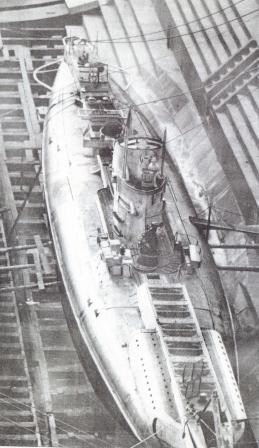 The next ace into the Alley was Johannes Lohs in command of UC75. Lohs was born in 1889 and entered the naval service in 1909. He took command of his first submarine, UC75, in March 1917, and patrolled the east coast of England. He arrived off Cork in May 1917, where he sank 3 sailing ships, 1 steamer, the sloop HMS Lavender, and 7 fishing boats off The Staggs, on the 3rd.
The next ace into the Alley was Johannes Lohs in command of UC75. Lohs was born in 1889 and entered the naval service in 1909. He took command of his first submarine, UC75, in March 1917, and patrolled the east coast of England. He arrived off Cork in May 1917, where he sank 3 sailing ships, 1 steamer, the sloop HMS Lavender, and 7 fishing boats off The Staggs, on the 3rd.
The sinking of the fishing boats is interesting, as it highlights a particular policy adapted by some U-boat commanders. This was not one of cruelty (sometimes vehemently argued), as there were by enlarge few casualties. It was instead, strategic. By creating such mayhem among fishing boats, it subsequently tied up some of HM naval resources. There were also some reports that fishing boats possessed radio. In any event, there is no doubt that many ‘fishing boats’ were converted and armed. They held onto their painted registration numbers, were fitted with radio communication and hydrophones, crewed by naval personnel, and patrolled the same waters. An attack on fishing boats was also an attack on a decreasing supply of food.
Another similar event occurred at the end of May, when UB64 sank 10 fishing smacks out of Kilkeel, while fishing off the Isle of Man. The two incidents are a little unusual, in that there were so many fishing boats involved, and one wonders what was going through the fishermen’s minds, as the surfaced U-boat went from smack to smack, sending them to the bottom with bombs and gunfire. Words must have been said!
Johannes Lohs patrolled again in May – June 1917, mainly focusing on the SW coast of England. He began attacking vessels in the Alley in July – August, and again in October – December, and hit 23 vessels.
In August, letters began to arrive at the world famous brewery Guinness in Dublin. Their barrels had washed up along the shoreline on both sides of the Alley and finders were looking for reward or recompense for their trouble saving the porter from the sea. The barrels had got there after commander Lohs in UC75 sunk the cross channel Guinness steamer W.M. Barkley on the 12th.
Dublin port had been closed due to submarine activity in the Alley but temporarily opened again to allow some ships to leave. This included the Barkley and its crew, who were not to know that the submarine had returned.
Lohs had been laying in wait off the Kish lightship, and torpedoed the steamer aft of the bridge on the starboard side, sinking her. Lights on this side had not been ‘darkened’. The ship was armed, but sure the gunner was below doing his washing with McGlue, who was making the tea.
Dublin man, ABS Thomas McGlue, survived the attack and later gave a remarkable account of events. Describing how, only for the barrels of Guinness, they would not have had enough time to get into a boat. So, it may be true that – ‘Guinness is good for you’.
Four were in the boat when Lohs came alongside. He queried the survivors as to the ship’s identity and cargo, and eventually gave them directions for shore. McGlue later marvelled at the encounter with the submarine, describing it “as big as a collier”, and at Lohs’s linguistic skills, “Sure he spoke better English than I did.” Her captain, Edward Gregory, from Arklow, and four other crew members, were killed in the attack.
The wreck of the Barkley lies exactly where it was sunk about seven miles east of the Kish lighthouse. A number of divers have visited the wreck and reported that there is much ‘silting’ of the hull and all of her wooden superstructure has disappeared.
Might it be likely that Diagio, the new owners of the famous brewery, could be tempted to sponsor a search of the wreck, for the only bell missing from their fine collection of the brewery’s mementos, now on display in the Guinness Hops Store museum? Another 4 years from now, the wreck will come under the protection of the National Monument’s Act ‘100 year rule’, and special authorisation will have to be sought for such a mission.
Mine laying.
What is of particular interest, are the methods used by Johannes Lohs to deploy his mines, and were he placed them. As for Ireland, he navigated the east coast, inside the notoriously dangerous sandbanks, Blackwater, Arklow and the Kish, placing his mines across the channels used by ships to avoid the sandbanks during their approach or exit to the harbours. In particular, ships carrying munitions from the extensive Kynoch production facility at Arklow. For this purpose, ships used both Wicklow and Arklow harbours. In order to place the mines in the correct positions, Lohs used the lightships for bearings. Mines were laid at night and during high water. His knowledge of these dangerous waters was comprehensive.
The Kynoch munitions works situated on the north shore at Arklow blew up killing 27 on 21st September 1917. Testimony at the inquest and a belief by townspeople that remains to this day, suggests that the explosion was caused by a shell fired from a submarine offshore. Submarine commanders knew this vast munitions works was there, and Lohs certainly showed a submarine could get within range of it.
UC75 Mine laying off Wicklow and Arklow 1917.
Lohs recorded his patrols on charts, where he indicated his routes, hits, geography, comments etc. During his July patrol, he laid his full complement of mines across all of the access channels to Arklow. Interestingly, he records bearings taken from the South Arklow LV for the laying of 6 of mines. Was this a replacement for the earlier sinking of this LV?
There is no record of a ship being damaged by these mines at this time. Nevertheless, he didn’t return to Flanders empty handed, and sank three steamers in the area by torpedo. The steamer Lynburn sank near the Arklow Bank when it struck a mine on August 29th.
Lohs’s knowledge of Liverpool Bay was equally impressive, as is evidenced in his diagrams of mine laying across the heavily patrolled Liverpool Bar, in the Queens’ Channel. These sunk the Liverpool pilot and examination vessel, A. H. Read on December 28th. The loss on the Read was terrible. There were a total of 41 men aboard the steam cutter, pilots, radio operators, examiners, apprentices, and only two survived. The mines however, may have been intended for the world’s largest liner turned troop transporter, on its first voyage from America in its new role.
Lohs had observed some very large vessels in the area, but missed the giant Leviathan ex Vaterland, seized earlier in New York. A hit would have been an enormous propaganda coup for Germany and a terrible blow to the morale of the Allies.
Lohs in UC75 operated in the English Channel during early January 1918, before taking over from Steinbrinck in UB57. His boat was rammed by HMS Fairy, off the Belgium coast in August, an incident like so many others, described as ‘controversial’.
Lohs took command of Steinbrinck’s old boat, UB57, and continued to chalk up considerable successes. Not least in the Alley, when he returned there in February 1918. UB57, Lohs and her crew were lost off Flanders in August 1918, when their boat struck a mine.
There was considerable U-boat activity in the Alley during WW1, and many other submarines were also active in this channel. These two U-boats and their commanders, Steinbrinck and Lohs, were particularly successful. They were highly decorated for their achievements and their memory was celebrated by their countrymen for many years after.
British Intelligence Takes on the Minelayers
The minelayers represented a threat like no other. If they had grown in any number, they could have saturated the waters around Britain and Ireland with mines, without ever been seen. On the other hand, they had an extremely high attrition rate. They were plagued with losses, apparently resulting from their own mines exploding beneath their hull or for ‘unexplained’ reasons. ‘Unexplained’ covers a multitude, but two incidents occurred in Irish waters that warrant a mention.
The first occurred when UC44 struck her own mine off Waterford on 4/5th August 1917. Her captain Kurt Tebbenjohanns and two crewmen escaped through the conning tower and reached the surface. After some time together in the water, they separated, and Tebbenjohanns was eventually rescued by local fishermen – Power (two brothers) and McGrath. The other two were not recovered, and were believed drowned.
The captain was later taken into custody and interrogated, revealing the full crew list and providing the explanation, that the ninth mine being laid had struck the submarine. The authorities alternatively claimed, they had laid a trap for the sub, by not sweeping up mines laid by an earlier UC boat, and that it was one of these which sank the boat.
The minelayer was quickly raised and transported into the nearby harbour of Dunmore East. The two other submariners who had escaped from the submarine with Tebbenjohanns, were Bahnster and Richter, both engine room crew. (Tebbenjohanns stated on the 7th while in custody in London, that there were “two or three others” who escaped with him through the conning tower.) Richter’s body was recovered(Note 6) and buried at Duncannon, situated across the Waterford estuary and to the NE of Dunmore East. His body was later reinterred in the German military cemetery at Glencree.
When the submarine was brought into Dunmore East, the bodies of its submariners were reported to have been in it, and were buried at sea later. Why they were never buried ashore, has never been satisfactorily explained? UC44 was taken back out to sea again, sunk, salvaged and dispersed, and dispersed once more, years later. Notwithstanding claims of having being dispersed, the engine from UC44 is also said to have rested for many years in a garage at Duncannon, and then finally under tons of rubble in its harbour.
The second case, occurred around the time UC44 was being salvaged, and was that of UC42. Again she was supposedly in the act of laying mines off the entrance to Cork harbour, when something happened. It was again claimed by the British authorities that she struck one of her own mines while laying them.
However, the U-boat had been detected by patrol boats on the seabed, apparently disabled. Sounds detected coming from within the submarine by some of the RN listeners in the patrol boats above, were said to have resembled – ‘morse’. The sub was depth charged and then dived on. Parts of the disabled submarine were retrieved by the divers, which indicated she was UC42. The hatches were said to have been open, serious damage to the stern was described, and it was conjectured that some of the submariners died trying to escape from the wreck. There were 27(28?) fatalities. An unknown number of her mines and torpedoes were subsequently removed by US and RN naval personnel.
UC42 was relocated in 2010 during a survey of the Kinsale Gas Field pipeline, and local divers quickly identified her before I paid it a visit. Lying relatively close to the pipeline, and in surprisingly good whole condition, the stern of the wreck shows some damaged, but to an untrained eye, this does not resemble the “completely destroyed” or “blown off” reports sent to the Admiralty. It had been suggested at the time, that, and once again, this damage was caused by striking her own mine.
In the opinion of the well know diver and researcher Eoin McGarry, this damage is consistent with what one might expect to be caused by a mine. He also states that, the first most foremost mine chute is empty, and that there are mines in the other five. There are no signs of the torpedoes, although some of the tubes remain closed. Quite a number of the mines remain – must count them next time.
The thing about these new breed of minelayers was this. Quite a large number were lost inexplicably. The most acceptable theory in some cases being, that the soluble plugs controlling the releasing mechanisms of the mines from their anchors, were faulty. Understandably, there were also a number of claims by submariners that the mines were being sabotaged during production. This claim is interesting, as there is some evidence that in a number of cases, it was the third mine, or the last one out of the chute, when ‘let go’ – exploded. These were the mines that could be adjusted.
I am going to stick my conspiratorial neck out here, with the following suggestion: When UC44 sank and Tebbenjohanns was brought ashore, cables flew between Dunmore, Cork and London, and the commander was whisked off to meet his interrogators. While he was in London, during the 7-8th, he penned two letters. These would have been heavily censored letters, with agreed text sent through the auspices of the Red Cross, and are now on file at PRO, Kew.
The first was to his father Friedrick Wilhelm on the 7th, outlining his ordeal, and asking his parents for more clothes etc., some which were still at his base in Brunsbuttel. He suggested that he would write to the base and inform his superiors that his parents would be collecting his belongings. (This latter part of his first letter was in preparation for what was to follow in the second.)
The second letter was to Lt. Commander Pasquay at Brunsbuttel, dated the 8th. Again, outlining his ordeal and the loss of the boat (not how) and crew. Apart from other obscure references such as not having paid his taxes (bills?) and making good an omission of thanks for a gift of books, he continued with the following suggestions for a visit by his parents to the base, in order that they might collect some of his belongings.
“I have requested my parents to arrange to fetch personally, if possible, the things which I left at Brunsbuttel. May I ask you to see that great care is taken in unpacking the box, so that there is no accident, as there are some eggs at the top. I have not yet thanked Messrs Goedard for the gift of books. Can this perhaps be done from your end.”
I don’t know if these letters were actually sent, or and as read, but it is a preposterous notion that a submarine commander who had just lost his boat and crew, and had become a POW, was remotely interested in broken eggs in his foot locker in Germany! Equally, I don’t know what was meant by the other obscure references to ‘taxes’ and ‘books’, but I strongly suspect that his reference to ‘eggs at the top’, clearly meant ‘mines at the top of the chutes’! Mines were often referred to as ‘eggs’, and this author was trying to warn his comrades what caused the loss of his boat.
The fact remains, that there is very little first-hand testimony to substantiate whether or not these submarines were struck by their own mines and if so – why? The only testimony was that of Kurt Tebbenjoannes. He remained in custody for the remainder of the war, and very little is known of him post war. He supposedly served again during WW2 and became a banker after that.
After the UC42 incident no more UC boats were reported to have been lost by striking one of their own mines during mine laying operations.
RECENT DISCOVERY July 2020.
UC47 REDISCOVERED
A team of technicians and archaeologist led by Mexican archaeologist Rodrigo Pacheco Ruiz, a researcher of the University of Southampton, have rediscovered the remains of the German WWI mine-laying submarine UC47. The submarine was sunk off the coast of Yorkshire in November 1917 when it was rammed by British naval craft after a chance encounter. The submarine and was then depth-charged while still lying on the seabed. There were no survivors.
Her commander Gunther von Wigankow (Also served on UB12 & UB17)had only recently replaced her commander-from-launch, Paul Hundius, who was considered an ‘Ace’. He wreaked havoc against shipping in the George’s Channell and right around the coast of Ireland during 1917 and 1918, while in command of submarines, UB16, UC47 and UB103.
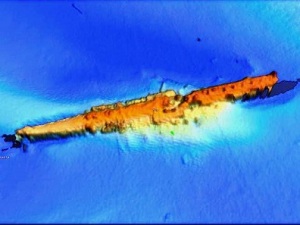
Scan of UC47 as is today.
All that has been said about ‘war crimes’ has made little difference, man continues to disappoint. It was a term not in use during WWI, and despite regrettable actions by both sides, some by commander Hundius during his service, would have been considered ‘above and beyond’, certainly by some of his rescued victims.
Commander Hundius was lost with all of his crew in September 1918, when in command of UB103, considered to be the last German submarine to have passed out through the Dover Straits in WWI.
Other ‘Aces’ in Irish waters. http://ouzelgalley.net/ouzelgalley/the-south-arklow-light-vessel-has-disapeared/
http://ouzelgalley.net/ouzelgalley/the-flanders-flotilla-in-irish-waters-ww1-2/
Conclusion
Laying mines was a ‘two way street’ and the Americans became better at it. They eventually laid thousands of them across the North Sea and the English Channel, terminating fully, Germany’s access to British waters and the Atlantic.
The Flanders command had two reputations. One, for the destruction of a huge amount of shipping by a number of exceptional commanders. And one cannot help wondering, if the outcome of the war might have differed, had there been but a dozen more like them.
The other was; this command suffered the loss of so many boats and crew that it also became known as,
‘Abs aufkommando’ – the drowning command.
(The reference above appears as it was copied from a file in the Public Records Office at Kew.)
Note 1. Reference to this body of water as ‘U-Boat Alley’ is derived from the book of the same name by author Roy Stokes, where the submarine war in Irish waters is covered extensively.
Note 2. The forward torpedo tubes of these minelayers were fitted externally on the pressure hull, but were operated from within it. The stern torpedo tube formed an integral part of the pressure hull and was operated from within. Spare torpedo tubes could be carried aft of the forward torpedo tubes externally. Reloading the forward tubes could only be carried out when the boat was on the surface. It was known for spare torpedoes to be carried within the sub, probably for the stern tube.
Note 3. Details of lighthouse and lightship operations around the coast of Ireland during WW1 are comprehensively covered in the publication ‘U-Boat Alley’.
Note 4. The word ‘hit’ is used to denote that a submarine fired and hit a ship. It also covers boarding and sinking a vessel with bombs or deckfire, and a sinking by a mine. In a few cases, the ship might have been subsequently been saved.
Note 5. At this time it appears that the two lightships mentioned were the only ones attacked and sunk by a German submarine during both WWs. It is possible that there other cases may come to light in non English speaking countries.
Note 6. The details surrounding the dead crew of UC44 is mystifying. The bodies in the submarine were seen by American officers stationed in Queenstown (Cork) during a visit by them to the wreck, when it was still in Dunmore East harbour. The Admiralty stated the bodies (28 fatalities) were respectively buried at sea. It is difficult to understand – why when they were ashore, they were not buried there? How the body of machinist Richter was recovered and came to be buried at Duncannon is not known. I discovered his name at the German cemetery in Glencree some years ago and traced him to UC44.
Our body gets about on just two limbs now, but our brain, I fear, has a long way to go.
Roy Stokes 07/02/2012-3
Featured image is; Uboat pens, Zeebrugge , post WWI.
Any part of this article that is subject to copyright cannot be reproduced without permissions.

